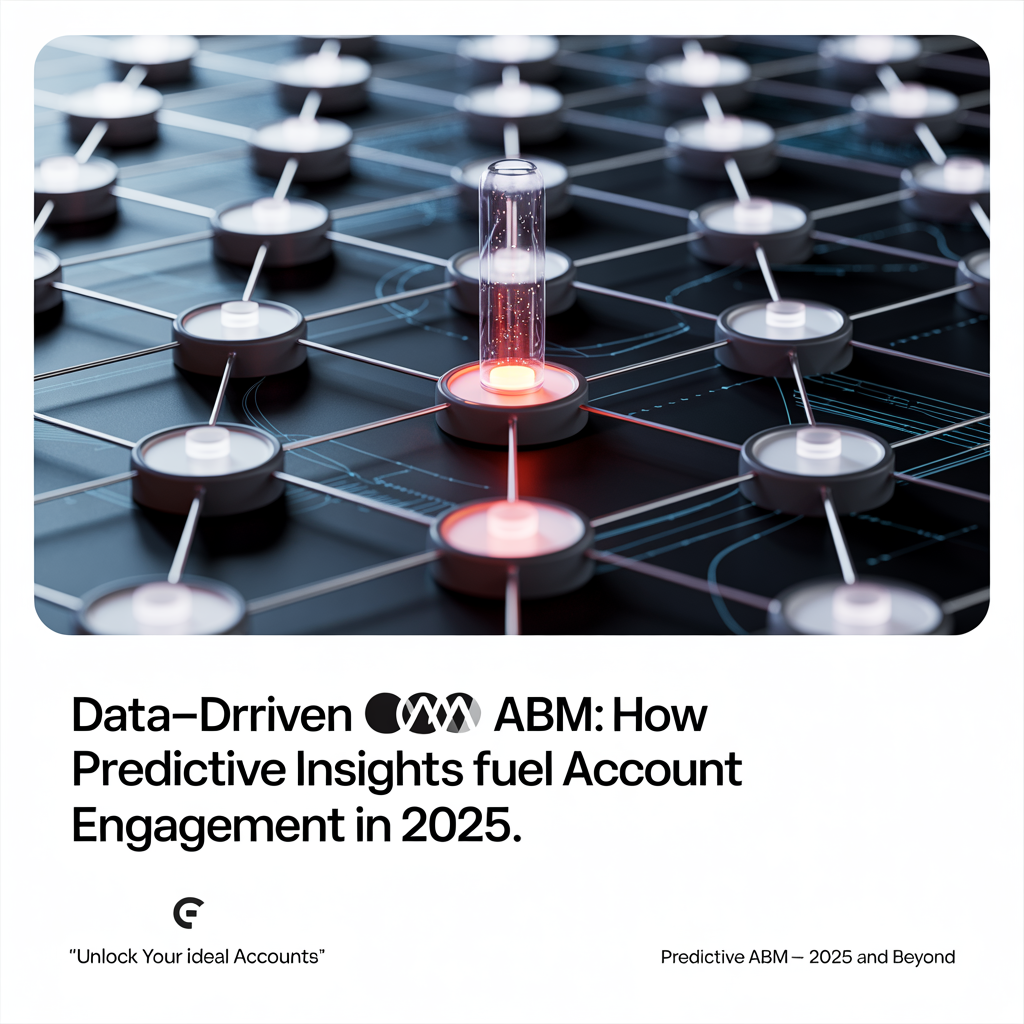Introduction
In the competitive B2B landscape of 2025, traditional marketing approaches often fail to capture the attention of high-value accounts. Account-Based Marketing (ABM) has emerged as the gold standard for aligning sales and marketing, but data-driven precision is what truly separates successful ABM strategies from the rest.
With predictive analytics now integrated into ABM platforms, marketers can go beyond historical data and harness AI-driven insights to forecast buyer intent, identify hidden opportunities, and tailor engagement strategies at scale.
This blog explores how predictive insights are fueling ABM success, the challenges organizations face, and how to leverage predictive models to maximize engagement and ROI.
What is Data-Driven ABM and Why It Matters
Data-driven ABM combines the strategic framework of ABM with advanced data analytics to deliver hyper-personalized engagement. Unlike static ABM, predictive ABM uses AI to anticipate account behavior and guide next-best actions.
📊 Stat: According to Forrester, predictive insights can increase ABM engagement rates by up to 40%, enabling sales and marketing teams to focus only on accounts with the highest conversion potential.
By analyzing historical data, intent signals, and firmographic insights, predictive ABM helps brands:
- Prioritize accounts most likely to convert
- Identify buying committees earlier
- Deliver content that resonates with real-time needs
- Shorten the sales cycle through proactive engagement
Challenges in Data-Driven ABM for Martech Leaders
While predictive analytics adds power to ABM, many organizations face hurdles, including:
- Data Fragmentation
- Disconnected CRM, marketing automation, and intent platforms often lead to incomplete account views.
- False Positives
- Without proper data validation, predictive models may identify accounts with intent but no real purchase readiness.
- Alignment Gaps
- Predictive insights are only effective if sales and marketing teams align around unified account strategies.
- Scalability Issues
- Personalization at scale requires a fine balance between automation and human-driven engagement.
- Privacy & Compliance
- With stricter data laws in 2025, ensuring compliance while leveraging predictive intent is a growing challenge.
Proven Strategies to Leverage Predictive ABM
- Integrate Intent Data Platforms
- Use platforms like Bombora, 6sense, or Demandbase to aggregate behavioral intent signals and align them with predictive scoring.
- Adopt Account Prioritization Models
- Rank accounts based on readiness, engagement, and fit. Focus resources on the top 20% that generate 80% of results.
- Map Predictive Insights to Buyer Journeys
- Predictive analytics should not just identify accounts—it should also guide engagement at each funnel stage with tailored content.
- Enhance Sales Enablement
- Share predictive signals with sales teams to personalize outreach and improve win rates.
- Experiment with AI-Driven Content Personalization
- Use AI to dynamically adjust messaging, offers, and recommendations across email, ads, and web experiences.
Trends and the Future of Predictive ABM in 2025
- AI + ABM Convergence: Predictive AI will evolve into prescriptive AI, suggesting exact steps for nurturing accounts.
- Real-Time Engagement: Data-driven ABM will move toward “always-on” engagement based on live signals.
- Multi-Intent Signals: Companies will rely on a mix of third-party intent, website behavior, and technographic data for better accuracy.
- Revenue Attribution Models: Predictive ABM will integrate deeper into RevOps, enabling precise ROI tracking across campaigns.
Pro Tips & Bonus Insights
- Don’t just collect data—activate it by embedding insights into every campaign decision.
- Use predictive scoring as a guide, not a gospel. Always validate insights with human context.
- Start small with a pilot program and scale once predictive ABM proves ROI.
Conclusion
In 2025, predictive analytics is no longer a “nice-to-have” but a critical engine for ABM success. By leveraging predictive insights, B2B marketers can focus on accounts with the highest revenue potential, deliver hyper-personalized engagement, and align sales and marketing around shared data-driven goals.
The future of ABM lies in precision, personalization, and predictive intelligence—and organizations that embrace it will outpace competitors in pipeline growth and revenue impact.
